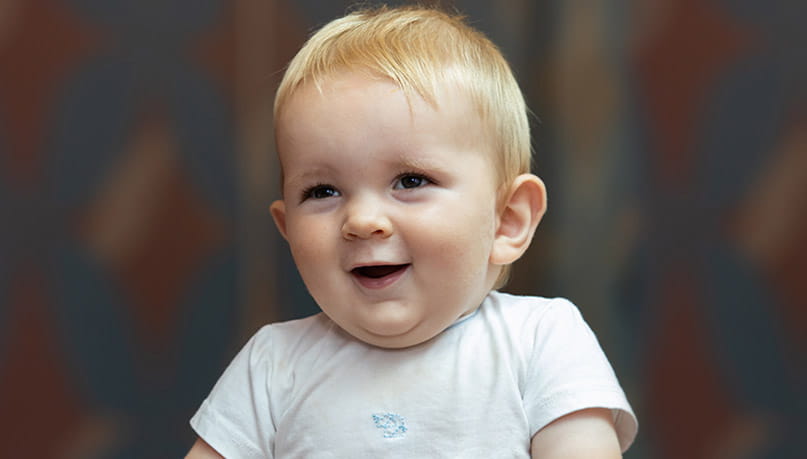How Is Torticollis Treated?
Torticollis is treated with physical therapy (PT). PT treatment includes gentle stretches, range of motion exercises, strengthening, repositioning, gentle massage and developing strong, symmetrical gross motor skills. Treating torticollis with PT has an excellent success rate, ranging between 90-99%.
Why Does My Child Need PT?
Torticollis causes a lack of flexibility of the neck muscles, which creates an imbalance of strength and flexibility throughout the body, not just the neck. This can cause babies to perform their motor skills asymmetrically (not equal side to side), such as using one hand or leg more than other. Infants are not yet right- or left-handed and should use both sides of the body equally. If not treated, torticollis can be associated with a delay in achieving gross motor milestones, such as rolling, sitting, crawling, pulling to stand, and walking. PT works with your baby to improve all of this. Torticollis does not impact your baby's intelligence. The PT evaluation will include taking your baby's history, examining the flexibility and strength of the neck, arms, legs and trunk, and assessing your baby's gross motor skills. During the evaluation, the therapist will also teach you about torticollis, answer your questions, and teach you daily exercises to complete with your baby.
What Is a Home Exercise Program?
Exercises for torticollis include daily stretches, strengthening exercises, gentle massage, repositioning, and developmental play activities. Increasing regular supervised tummy time is also extremely important for strengthening the baby's neck, shoulders, and back. Tummy time should begin within the first few days of life. This helps your baby become strong and ready to roll, sit and crawl. Research* has shown that by 4 months of age, a baby should receive at least 80 minutes of tummy time added up throughout the day. Tummy time can be achieved in many ways, not just on the floor.
Please see our UPMC Children's Hospital of Pittsburgh Tummy Time brochure for more detailed information and ideas for tummy time.
Will the Exercises Hurt My Child?
Although your baby may fuss during the exercises, they will not harm your baby. Your trained physical therapist will teach you gentle neck stretches and massage for your baby and practice them with you to be sure you are performing them correctly and safely. The PT will teach you how to monitor your baby for any signs of discomfort or distress.
What is Repositioning and Why Is It Important?
Repositioning is an important part of treating torticollis. Many babies with torticollis also have deformational plagiocephaly (misshapen head) due to the strong preference for keeping the head turned or tilted to one side. Repositioning your baby and increasing tummy time helps to reduce pressure on the back of the head, prevent flattening and improves existing flat spots. It also helps your baby keep her head and neck in a midline position.
How Long Will My Baby Need PT?
The duration and frequency of PT will depend on the individual baby. The earlier a baby begins PT for torticollis, the better. Factors that can affect PT duration are severity of the torticollis, developmental progress, and whether the family is completing daily exercises and repositioning. A baby is typically followed by PT until around 12 months of age or until the child is walking independently to be sure the strength, flexibility, and motor skills are equal on both side. How often a baby receives PT typically decreases as the baby gets older. Talk with your PT about how long and how often your baby will need PT.
Does My Baby Need to Wear a Helmet for a Misshapen Head?
If you are concerned about your child's head shape, despite your efforts at repositioning, talk to your health care provider to initiate further evaluation to determine if helmet therapy is necessary. Helmet therapy is most effective if begun by 6 months of age.









